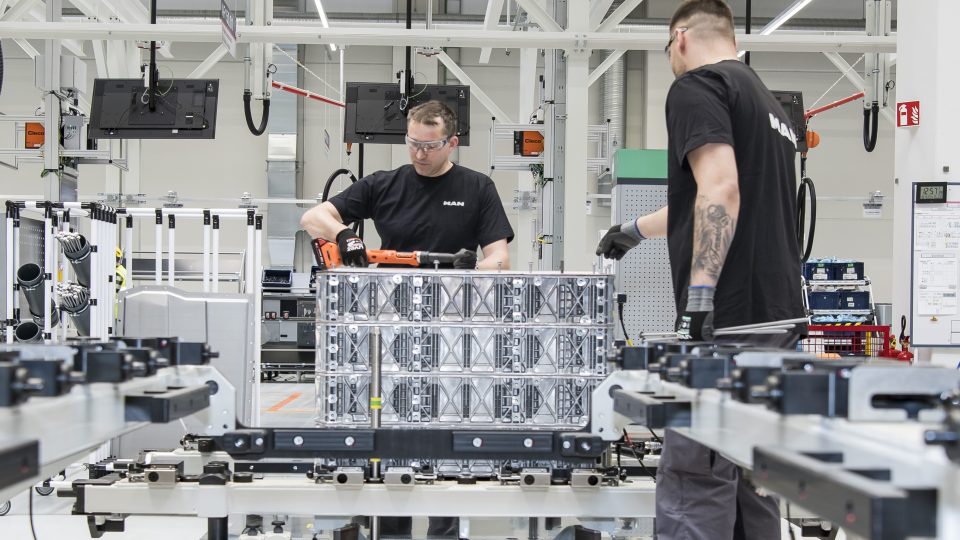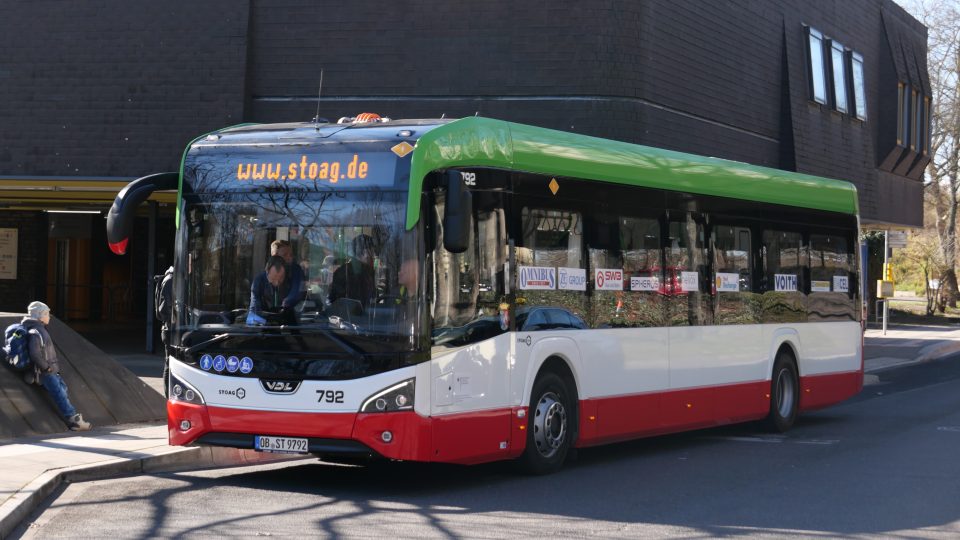66 per cent growth for US electric bus market in 2022, according to CALSTART
The US e-bus market experienced a 66% increase since 2021. As of September 2022, the total count of full-size battery-electric and fuel-cell electric transit buses has reached 5,480 (it was 3,297 in 2021). The data is reported on CALSTART Zeroing in on ZEBs annual report, that provides an updated index of adopted ZEBs that have […]
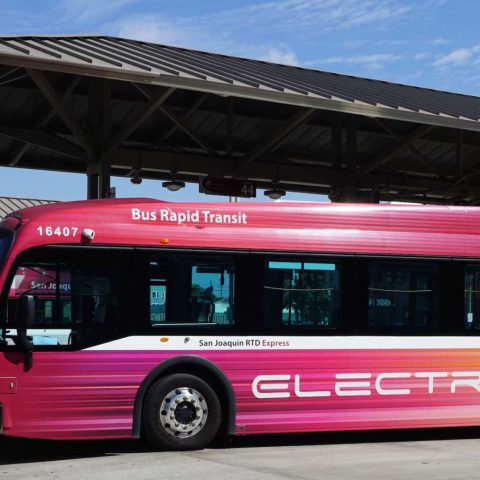
The US e-bus market experienced a 66% increase since 2021. As of September 2022, the total count of full-size battery-electric and fuel-cell electric transit buses has reached 5,480 (it was 3,297 in 2021). The data is reported on CALSTART Zeroing in on ZEBs annual report, that provides an updated index of adopted ZEBs that have been funded, ordered, and/or delivered within the United States and Canada according to data collected through September 2022.
California, a state where all new sales of transit buses must be zero-emission by 2030, in compliance with the Innovative Clean Transit (ICT) regulation, has the most ZEBs in the country with 1,977 vehicles.
The West Coast overall, including California, Oregon, and Washington, accounts for 41% of ZEBs nationwide. New York follows behind California with 489 total buses.
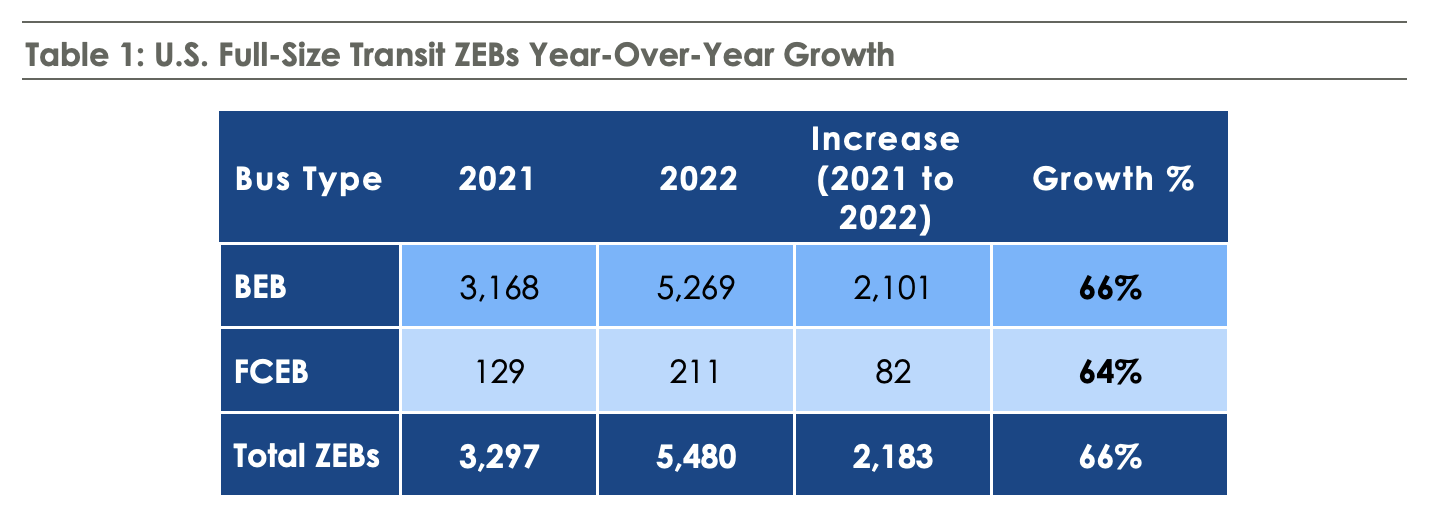
CALSTART on zero emission bus market in North America
CALSTART Zeroing in on ZEBs annual report is funded by the Federal Transit Administration (FTA) and the California Air Resources Board’s (CARB’s) Hybrid and Zero-Emission Truck and Bus Voucher Incentive Project (HVIP).
“When President Biden signed the Infrastructure Investment and Jobs Act into law in November of 2021, historic levels of funding were made available for zero-emission transit projects and paved the way forward for ZEB adoption”, CALSTART underlines.
Other states, including Arizona, Massachusetts, Vermont, and Maine, doubled their count in the last year. As the report states, “Arizona and Massachusetts saw the largest year-over-year increases at 280% and 271%, respectively.” The southeastern and southwestern United States, led by Florida and Texas, showed strong gains in the number of full-size zero emission buses, indicating these regions have accelerated the pace of adoption compared to previous years.
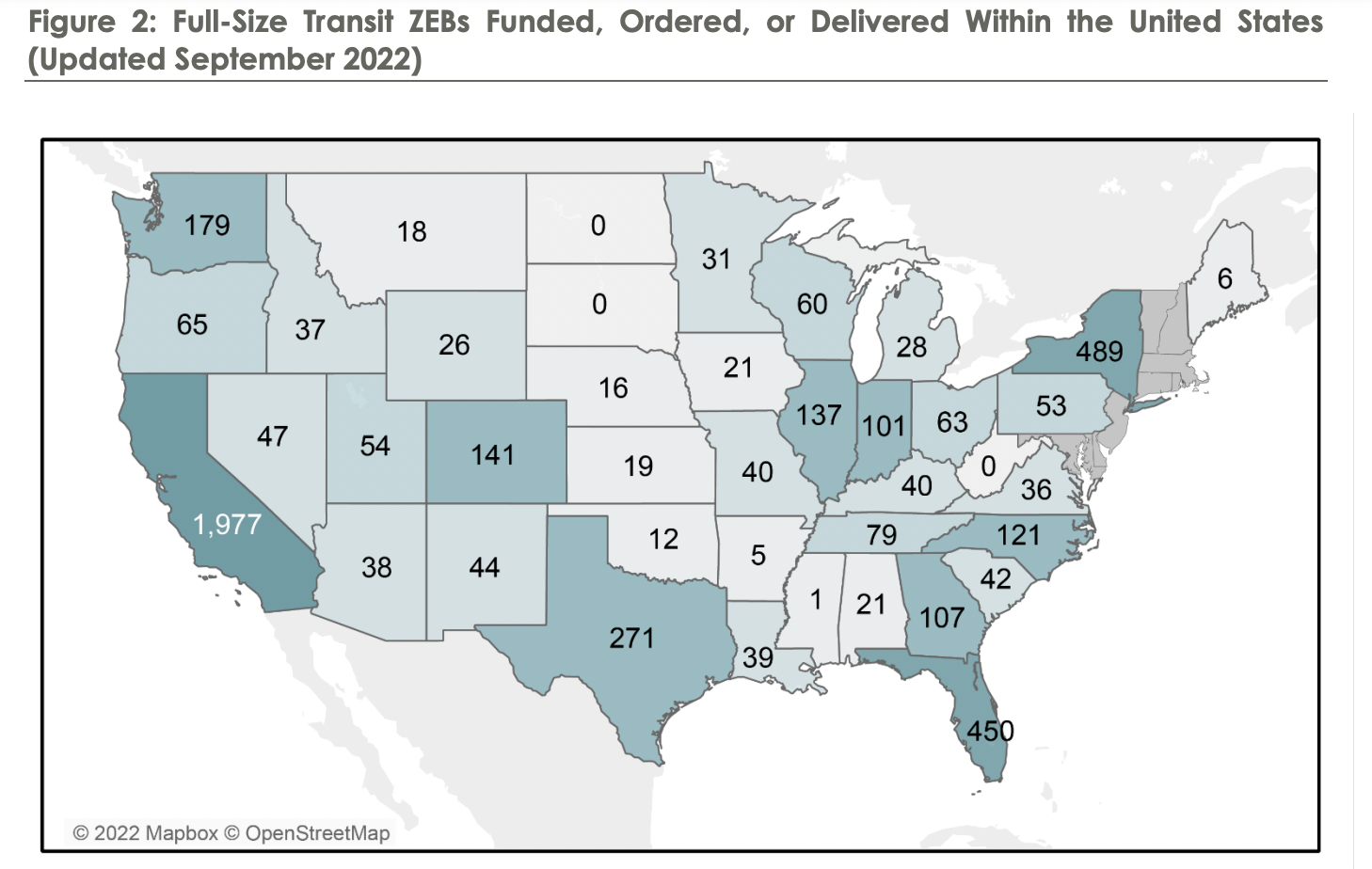
What about small zero emission buses?
Looking at buses under 30 feet in length (9.1-meter), as of September 2022, 876 small ZEBs have been adopted in the United States by public transit agencies, private fleets, and airports. The total count of small ZEBs grew by 261 from 2021 – an overall increase of 42% year-over-year, though the growth rate is 31% less than the rate recorded in 2021. There are now 100 public transit agencies with small ZEBs in the United States – of the 100, 18 public agencies purchased their first small ZEBs in 2022. Private companies purchased 14 small ZEBs in 2022.
Airports increased the total number of small ZEBs from 114 in 2021 to 142 in 2022, a 25% growth rate. The increase of full-size airport ZEBs has also increased to 151 as of September 2022, all of which are battery-electric operational vehicles.
Fuel cell buses, a growing niche
Fuel cell e-buses continue to gain traction, with a 64% increase in adoption seen since the 2021 count. While California also leads the country in the number of FCEBs adopted, there are now 14 states with transit agencies that have adopted FCEBs, including Arizona, Delaware, Maryland, and New York. The number of states with 10 or more FCEBs doubled, growing from two states in 2021 to four in 2022.
Canada has also experienced year-to-year growth in full-size and small ZEB adoptions. As of September 2022, the number of ZEBs across the country has grown to 859, including 219 new full-size buses added this year. Of this, 849 are BEBs and 10 are FCEBs. Canada’s most populous providence, Ontario, continues to lead the nation with 529 ZEBs, which is five times higher than Manitoba’s 104 ZEBs. The adoption of ZEBs grew by 34% from 2021 to 22 vehicles, showing progress toward achieving net-zero emissions goals by 2050. Transit agencies in Montreal and British Columbia have committed to having 100% zero-emission fleets by 2040 as well, and the Canadian government pledged to deploy 5,000 zero-emission transit and school buses on the road by 2025 as part of the Zero Emission Transit Fund.
“We are delighted to release another Zeroing in on ZEBs report with the latest inventory data on zero-emission transit buses across the United States and Canada. We couldn’t have done it without the support of our dedicated staff and partners. We would like to thank the Canadian Urban Transit Research and Innovation Consortium as well as the FTA and CARB’s HVIP for working with CALSTART. We are excited to share updates of this report for years to come,” said Jared Schnader, CALSTART Bus Programs Director.




